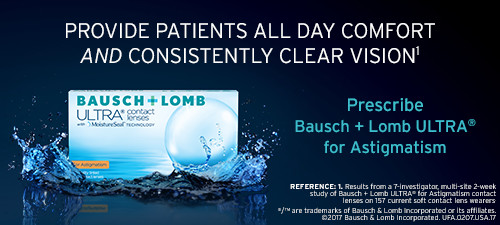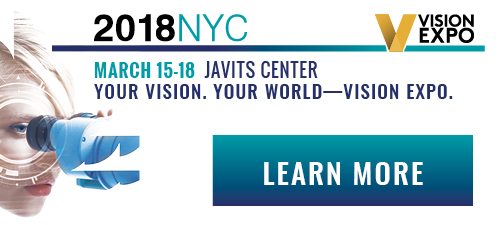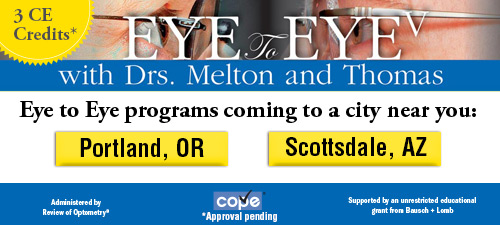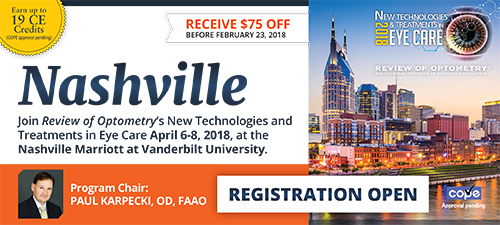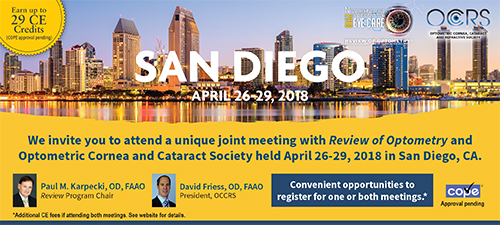
A
weekly e-journal by Art Epstein, OD, FAAO
Off the Cuff: Glass Houses
As our practice patterns have become more alike, relations between optometrists and ophthalmologists have steadily improved. Then something like this appears. The Tulane Optometric Surgery Research Project is among the worst pieces of propagandized anti-optometry claptrap I’ve encountered in many years of practice.
|
|||||
|
||||
| Influence of Meibomian Gland Dysfunction and Friction-Related Disease on the Severity of Dry Eye | ||||
This study enrolled 449 patients with dry eye disease (DED) (63 men and 386 women; mean age, 62.6±15.7 years [range, 21 to 90 years]) to evaluate the effect of meibomian gland dysfunction (MGD) and friction-related disease (FRD) on the severity of DED. Subjective symptoms, the ocular surface, tear function, and the presence of MGD and FRD (superior limbic keratoconjunctivitis, conjunctivochalasis and lid wiper epitheliopathy) were investigated. Researchers classified the participants into aqueous-deficient dry eye (ADDE; n=231 [51.4%]) and short TBUT dry eye subtype (TBUT-DE; n=109 [24.3%]) subgroups. The TBUT was shorter in patients with MGD than in those without MGD, whereas other ocular signs showed no difference (TBUT: MGD present, 1.97±1.02 seconds; MGD absent, 2.94±1.63 seconds; ADDE/MGD present, 1.94±1.08 seconds; ADDE/MGD absent, 2.77±1.61 seconds; short TBUT-DE/MGD present, 2.07±0.97 seconds; and short TBUT-DE/MGD absent, 2.94±1.23 seconds). The ADDE patients with FRD showed a worse TBUT than ADDE patients without FRD (TBUT: ADDE/FRD present, 2.08±1.39 seconds; and ADDE/FRD absent, 2.92±1.54 seconds). This study showed associations between MGD, FRD or both, and ocular signs in DED. In the presence of MGD, FRD or both, TBUT was significantly shortened regardless of the dry eye status or subtype. |
||||
SOURCE: Vu CHV, Kawashima M, Yamada M, et al. Influence of meibomian gland dysfunction and friction-related disease on the severity of dry eye. Ophthalmology. 2018; Feb 16. [Epub ahead of print]. |
||||

|
||
| Does the Temperature of an Artificial Tear Affect its Comfort? | ||||
Refrigerated eye drops have been advocated in cases of ocular allergies to provide a soothing effect upon instillation. Researchers wrote that this practice continues to be promoted by practitioners for artificial tears (AT) in the management of dry eye (DE) with little support in the literature. To further substantiate claims of a soothing effect of cold eye drops, the aim of this study was to determine if refrigeration of an AT enhanced the subjective comfort upon instillation.
Participants with mild to moderate DE participated in an open-label, contralateral study of two weeks duration. Each participant instilled Systane Ultra (Alcon Laboratories) in the morning (between 6.00 and 10.00 hours) and in the evening (between 18.00 and 22.00 hours). Participants were asked to report the subjective comfort immediately after both of these instillations, on a scale from one (poor) to 10 (excellent). This was done for ambient (aAT) and refrigerated (rAT) drops. An in vitro study evaluated if there were any changes in eye drop pH and osmolarity with refrigeration. Participants (n=18, three male, 15 female; age 22 to 28 years, average 24.4±1.6) reported mean comfort scores (±standard deviation) of 7.8±0.9 for the aAT and 7.6±1.4 for the rAT. Mean comfort scores (±standard deviation) for morning were 7.7±1.2 and for the evening were 7.8±1.1. A non-parametric Friedman test of differences among repeated measures was conducted and rendered a chi-squared value of 3.74, which was not statistically significant. The pH remained stable at 8, and the osmolality did not vary significantly with refrigeration. Researchers concluded that there was no advantage, with respect to patient perceived comfort, in refrigerating the Systane Ultra AT for mild to moderate DE. |
||||
SOURCE: Bitton E, Crncich V, Brunet N. Does the temperature of an artificial tear affect its comfort? Clin Exp Optom. 2018; Feb 18. [Epub ahead of print]. |
||||
|
|||
| Effect of Brimonidine on Human Meibomian Gland Epithelial Cells | ||||
Investigators recently discovered that the anti-glaucoma pharmaceuticals timolol—a β-adrenergic antagonist—and pilocarpine—a cholinergic compound—negatively influence the morphology, proliferative capacity and survival of human meibomian gland epithelial cells (HMGECs). They hypothesized that another class of anti-glaucoma drugs, the α2-adrenergic agonists, also acted directly on HMGECs to affect their structure and function, and tested this hypothesis. Immortalized (i) HMGECs were cultured with brimonidine, as well as clonidine (α2 agonist), phenylephrine (α1 agonist), RX821002 (inverse α2 agonist) and MK912 (neutral α2 agonist) for up to seven days. Cells were counted with a hemocytometer, and evaluated for morphology, signaling pathway activity, protein biomarker expression, and the accumulation of neutral lipids, phospholipids and lysosomes.
Investigators’ findings demonstrated that brimondine treatment induced a dose-dependent decrease in Akt signaling and proliferation of iHMGECs. In contrast, brimonidine also promoted a dose-dependent differentiation of iHMGECs, including an increase in neutral lipid, phospholipid and lysosome levels. These effects were paralleled by an inhibition of p38 signaling and duplicated by cellular exposure to clonidine, but not phenylephrine. Brimonidine also enhanced the cellular content of sterol regulatory binding protein-1, a master regulator of lipid synthesis. Of particular interest, the putative α2 antagonists RX821002 and MK912 did not interfere with brimonidine action, but rather stimulated IHMGEC differentiation. Investigators wrote that the findings supported their hypothesis and demonstrated that α2 adrenergic agonists acted directly on iHMGECs. However, they added, these compounds did not elicit an overall negative effect; rather, the α2 agonists promoted the differentiation of iHMGECs. |
||||
SOURCE: Han X, Liu Y, Kam WR, et al. Effect of brimonidine, an α2 adrenergic agonist, on human meibomian gland epithelial cells. Exp Eye Res. 2018;170:20-28. |
||||
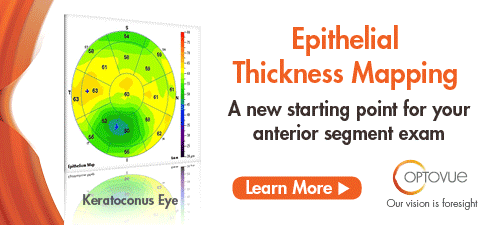
|
||
| News & Notes | |||||||||||||||
| SECO Names Emilio Balius, OD, as President SECO International announced that Emilio H. Balius, OD would become the group’s next president and would be formally introduced to the industry during the House of Delegates meeting on March 2 during SECO 2018. Dr. Balius will be the first Hispanic president to lead the organization. He has managed his own practice in Florida for the past 25 years and is well-versed about the needs and concerns of optometrists in today’s business climate. Read Dr. Balius’ full acceptance speech.
|
|||||||||||||||
| Bausch + Lomb Signs Agreement with IDOC Bausch + Lomb announced an agreement with IDOC, a privately held alliance of independent doctors of optometry in the U.S. Under the terms of the agreement, IDOC will offer its 3,000-plus members the Bausch + Lomb Ultra contact lenses, Biotrue OneDay daily disposable contact lenses and brands from its Specialty Vision Products portfolio, including Bausch + Lomb Zenlens and Zen RC scleral lenses. IDOC members will also receive exclusive pricing and rebate programs. Read more. |
|||||||||||||||
|
|||||||||||||||
|
|||||||||||||||
|
Optometric Physician™ (OP) newsletter is owned and published by Dr. Arthur Epstein. It is distributed by the Review Group, a Division of Jobson Medical Information LLC (JMI), 11 Campus Boulevard, Newtown Square, PA 19073. HOW TO ADVERTISE |


